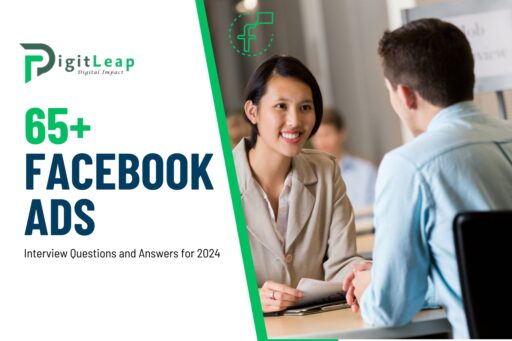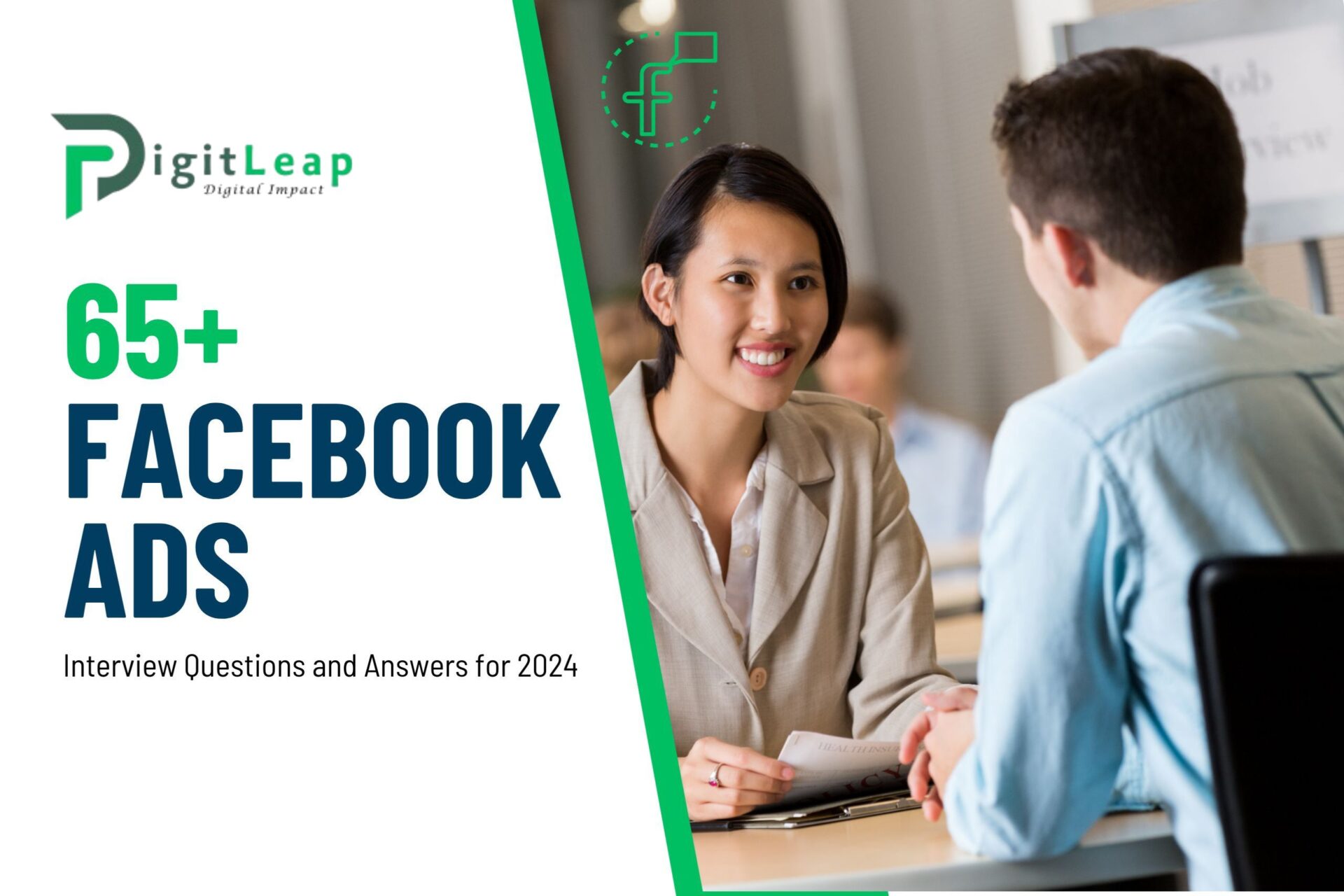Top 65+ Facebook Ads Interview Questions and Answers for 2025
Navigating the ever-changing landscape of Facebook Ads requires both creative flair and a solid grasp of technical details. Whether you’re interviewing for a role in digital marketing or simply looking to sharpen your knowledge, here’s a comprehensive, human-friendly list of over 65 Facebook Ads interview questions with sample answers to help you shine in 2025.

General and Strategic Questions
- What are Facebook Ads, and why are they crucial for modern marketing?
Answer: Facebook Ads are paid advertisements that appear on Facebook and its affiliated platforms. They’re essential because they help brands reach a highly targeted audience, boost engagement, and drive conversions through visually appealing and interactive content. - How have Facebook Ads evolved over the years?
Answer: The platform has grown from basic display ads to include diverse formats like Carousel, Video, and Collection Ads. Advances in targeting, automation, and analytics now allow for more precise and efficient campaigns. - What do you consider the primary objective of a Facebook Ads campaign?
Answer: The main objective can vary—whether it’s raising brand awareness, generating leads, or driving sales. The goal is always to reach the right audience with the right message at the right time. - How do you determine the best campaign objective in Facebook Ads Manager?
Answer: I align the objective with business goals and use past campaign data. For instance, if lead generation is key, I choose that objective and tailor my creative and targeting accordingly. - What role does audience segmentation play in your strategy?
Answer: Segmentation allows for tailored messaging. By creating Custom and Lookalike Audiences, I ensure that ads reach those most likely to engage, resulting in better performance and higher ROI.
Ad Formats and Creative
- What are the most common ad formats on Facebook?
Answer: Common formats include Photo Ads, Video Ads, Carousel Ads, Slideshow Ads, and Collection Ads. Each format serves a different purpose, whether it’s showcasing multiple products or telling a compelling story. - How do you decide which ad format to use?
Answer: I consider the campaign goal, the message, and the audience. For product showcases, Carousel Ads work best, while Video Ads are ideal for storytelling and engagement. - Why is creative quality important in Facebook Ads?
Answer: High-quality visuals and compelling copy capture attention, convey the brand message effectively, and drive better engagement. Poor creative can lead to low CTR and wasted ad spend. - How do you ensure your creative assets are mobile-friendly?
Answer: I design creatives with mobile in mind—using high-resolution images, clear messaging, and formats that display well on smaller screens, since the majority of Facebook users access the platform via mobile devices. - What is a Carousel Ad, and what are its benefits?
Answer: Carousel Ads allow you to display multiple images or videos within a single ad unit. They’re great for telling a story, showcasing a range of products, or highlighting various features in an interactive way.
Targeting and Campaign Setup
- How do you define your target audience on Facebook?
Answer: I use a combination of demographic, interest, and behavior targeting. Custom Audiences based on website visits or customer lists and Lookalike Audiences are also key to reaching the most relevant users. - What is the importance of using Custom Audiences?
Answer: Custom Audiences let you target users who have already shown interest in your brand, making it easier to re-engage potential customers and improve conversion rates. - How do you create a Lookalike Audience, and why is it effective?
Answer: Lookalike Audiences are created by analyzing the characteristics of your best customers and finding new users who share similar traits. This approach helps expand your reach to a highly relevant audience. - What are some advanced targeting options available on Facebook?
Answer: Beyond demographics and interests, Facebook offers behavior-based targeting, geographic targeting, and detailed targeting by device usage, which can all be combined to fine-tune your audience. - How do you handle targeting for seasonal or limited-time campaigns?
Answer: I adjust targeting based on current trends, use time-bound Custom Audiences, and schedule ads to coincide with peak engagement times, ensuring the right users see the right message at the right time.
Budgeting, Bidding, and Optimization
- How do you determine your budget for Facebook Ads?
Answer: Budget decisions are based on campaign goals, historical data, and expected ROI. I start with a test budget, analyze performance, and then scale successful campaigns. - What bidding strategies do you typically use?
Answer: I use both manual and automated bidding strategies, such as Target CPA and Maximum Conversions, depending on campaign goals and performance insights. - How do you optimize bids for better campaign performance?
Answer: By continuously monitoring performance, I adjust bids for high-performing segments while reducing spend on underperformers. Automated bidding tools also help manage adjustments in real time. - What is ad frequency, and how do you manage it?
Answer: Ad frequency refers to how often an ad is shown to the same user. To prevent ad fatigue, I set frequency caps and refresh creatives regularly. - How do you handle high cost per click (CPC) issues?
Answer: I refine targeting, test new ad creatives, and adjust bidding strategies to improve ad relevance and quality, which in turn lowers CPC.
Analytics and Reporting
- What metrics do you monitor to measure the success of Facebook Ads?
Answer: Key metrics include impressions, click-through rate (CTR), conversion rate, cost per click (CPC), cost per acquisition (CPA), and return on ad spend (ROAS). - How do you track conversions from your Facebook Ads campaigns?
Answer: I use Facebook Pixel and Conversion API to track actions on the website, such as purchases or sign-ups, and integrate these with analytics tools for a comprehensive view. - What role does A/B testing play in your strategy?
Answer: A/B testing is essential for optimizing ad elements like images, headlines, and CTAs. It helps determine which variations drive the best engagement and conversion rates. - How do you use Facebook Insights to improve your campaigns?
Answer: Facebook Insights provide data on user engagement and ad performance. I use these insights to adjust targeting, refine creative elements, and better understand audience behavior. - What tools do you rely on for detailed ad performance analysis?
Answer: In addition to Facebook Ads Manager and Insights, I use third-party tools like Hootsuite, Sprout Social, and Google Analytics for a broader view of campaign effectiveness.
Creative and Content Strategies
- How do you ensure your ad copy resonates with your audience?
Answer: I craft clear, concise copy that speaks directly to the audience’s needs and desires, using language that feels natural and relatable. Testing different messages helps pinpoint what works best. - What are some tips for writing effective call-to-actions (CTAs) in Facebook Ads?
Answer: Effective CTAs should be clear, action-oriented, and create a sense of urgency. Phrases like “Shop Now” or “Learn More” paired with a strong visual can drive higher engagement. - How do you incorporate user-generated content in your Facebook Ads?
Answer: By featuring testimonials, reviews, or user-submitted photos, you can build trust and authenticity. This content often resonates well with audiences and improves ad performance. - What role does video play in your Facebook Ads strategy?
Answer: Video content is highly engaging and tends to capture attention quickly. I use short, impactful videos that tell a story or demonstrate a product’s value to boost engagement and conversions. - How do you balance promotional content with engaging, value-driven content?
Answer: It’s important to mix content that promotes products with posts that entertain or educate. This balanced approach keeps the audience interested without feeling overwhelmed by sales pitches.
Campaign Management and Best Practices
- How do you manage multiple campaigns effectively?
Answer: I use Facebook Ads Manager along with project management tools to keep track of various campaigns. Regular performance reviews and clear objectives help maintain organization. - How do you schedule ads for maximum impact?
Answer: I analyze audience activity patterns and schedule ads during peak engagement times. Facebook’s ad scheduling tools allow for precise control over when ads appear. - What strategies do you use to handle negative feedback on your ads?
Answer: I monitor feedback closely and address any negative comments promptly and professionally. This not only improves brand reputation but also provides insights into potential areas of improvement. - How do you maintain consistency across your Facebook Ads campaigns?
Answer: Consistency is achieved by following brand guidelines for visuals and messaging. Using templates and clear brand standards ensures all ads reflect the same identity. - How do you leverage retargeting in your campaigns?
Answer: Retargeting helps re-engage users who have interacted with your brand. I set up campaigns that target visitors who didn’t convert initially, using tailored messages to bring them back. - What role does influencer marketing play in your Facebook Ads strategy?
Answer: Collaborating with influencers can extend reach and add credibility to campaigns. I work with influencers whose audiences align with our target market to boost engagement and trust. - How do you customize your ad messaging for different segments?
Answer: I use audience segmentation to tailor messages based on demographics, interests, and behavior. This targeted approach increases relevance and engagement. - How do you handle ad disapprovals or policy issues on Facebook?
Answer: I review the disapproval notice, make the necessary changes, and resubmit the ad. Staying informed about Facebook’s policies helps minimize these issues. - How do you ensure your ad creatives are up-to-date with current trends?
Answer: I keep an eye on industry trends and use creative testing to refresh visuals regularly. Staying current with design trends helps maintain audience interest. - What is the importance of cross-channel integration in Facebook Ads?
Answer: Integrating Facebook Ads with other marketing channels—such as email, SEO, and content marketing—creates a cohesive strategy that reinforces your brand message and drives consistent results. - How do you optimize your landing pages for Facebook Ads?
Answer: Landing pages must be mobile-friendly, load quickly, and reflect the ad’s messaging. Clear CTAs and user-focused design improve conversion rates. - What are Dynamic Ads and how do you use them?
Answer: Dynamic Ads automatically show the right products to people who have expressed interest on your website. They’re especially useful for e-commerce, allowing for personalized ad experiences. - How do you approach budgeting for Facebook Ads?
Answer: I start by setting clear goals and allocate budgets based on past performance and projected ROI. Regular monitoring and adjustments ensure the budget is spent efficiently. - What steps do you take to improve ad relevance scores?
Answer: Improving relevance involves fine-tuning targeting, refreshing creative content, and aligning ad messaging with audience expectations. Regular A/B testing also helps identify the best-performing elements. - How do you manage ad frequency to avoid oversaturation?
Answer: I set frequency caps and rotate ad creatives to keep content fresh. Monitoring performance data helps me avoid ad fatigue and maintain user engagement. - How do you balance organic and paid efforts on Facebook?
Answer: A balanced strategy uses organic posts to build community and paid ads to drive targeted traffic. This synergy reinforces brand presence and maximizes overall impact. - What are some cost-effective tactics to improve your Facebook Ads performance?
Answer: Focus on high-quality creatives, narrow your targeting, and use A/B testing to optimize ad elements. Adjusting bids and reallocating budget based on performance data also helps reduce costs. - How do you use Facebook’s ad reporting features?
Answer: Facebook’s reporting tools provide insights into metrics like CTR, conversion rates, and ROAS. I use these reports to evaluate performance, identify trends, and make data-driven decisions. - How do you incorporate customer feedback into your ad strategy?
Answer: I gather feedback from comments, surveys, and engagement metrics, then use that information to refine messaging and creative elements. This ongoing loop helps improve campaign effectiveness. - How do you stay updated with changes on Facebook’s advertising platform?
Answer: I follow industry blogs, attend webinars, and participate in professional groups. Continuous learning is key to adapting strategies as the platform evolves. - What challenges have you faced with Facebook Ads and how did you resolve them?
Answer: Common challenges include low CTR and high CPC. I overcome these by tweaking ad creatives, adjusting targeting settings, and experimenting with different bidding strategies. - How do you approach multi-language campaigns on Facebook?
Answer: I create separate campaigns for different languages and regions, ensuring that ad copy is culturally relevant and translated accurately. This approach improves engagement and conversion rates in diverse markets. - What role does video content play in your Facebook Ads strategy?
Answer: Video is a highly engaging format that captures attention quickly. I use short, impactful videos to tell a story, demonstrate product benefits, or share customer testimonials. - How do you optimize ads for seasonal campaigns?
Answer: Seasonal campaigns require timely content and flexible targeting. I adjust ad copy, creatives, and budgets to align with seasonal trends and user behavior during peak times. - How do you handle negative feedback on Facebook Ads?
Answer: I respond promptly and professionally to negative comments, addressing concerns and offering solutions. This proactive approach helps maintain a positive brand image. - How do you integrate Facebook Ads with e-commerce strategies?
Answer: I align Facebook Ads with product catalogs and use Dynamic Ads to showcase relevant products to users. Integration with platforms like Shopify makes tracking and optimization seamless. - What strategies do you use for influencer collaborations in Facebook Ads?
Answer: I identify influencers whose audience matches my target market and collaborate on content that feels authentic and engaging. This helps extend reach and build trust. - How do you use remarketing effectively on Facebook?
Answer: Remarketing targets users who have previously visited my website or interacted with my content. I create tailored messages and offers to re-engage these potential customers and guide them toward conversion. - How do you handle campaign scaling?
Answer: Once a campaign is performing well, I gradually increase the budget and expand the target audience. I continuously monitor performance to ensure that scaling doesn’t compromise ad quality. - What is the impact of ad frequency on performance, and how do you control it?
Answer: High ad frequency can lead to fatigue and lower engagement. I control frequency through scheduling and frequency caps, ensuring that ads remain effective without overwhelming the audience. - How do you customize ad creative for different audience segments?
Answer: I use audience insights to tailor visuals and messaging for different segments. This could involve varying images, copy, or CTAs to match the interests and behaviors of each group. - What tools do you use to manage and monitor Facebook Ads?
Answer: I rely on Facebook Ads Manager for real-time tracking and analytics, along with third-party tools like Hootsuite or Sprout Social for broader campaign management and reporting. - How do you ensure your Facebook Ads strategy aligns with overall business goals?
Answer: I set clear objectives that tie back to the company’s broader goals and continuously review performance data to make sure that the campaigns are driving the desired outcomes. - How do you approach troubleshooting issues with Facebook Ads?
Answer: I start by reviewing ad performance data and error messages, then adjust targeting, creative, or bids as necessary. Collaborating with support teams and using community forums can also help resolve issues quickly. - What advice would you give to someone new to Facebook Ads?
Answer: Start by learning the basics of targeting, creative development, and analytics. Experiment with small budgets, track your performance closely, and always be willing to adjust based on the data you gather. - How do you handle cross-platform integration with Facebook Ads?
Answer: I ensure that Facebook Ads are part of a broader, integrated marketing strategy that includes email, content, and other social channels, creating a consistent message across all platforms.
Conclusion
Mastering Facebook Ads in 2025 means blending creativity with data-driven strategies. These 66+ interview questions and answers cover everything from campaign setup and targeting to budgeting, creative strategies, and performance optimization. Whether you’re preparing for an interview or refining your own approach, these insights will help you navigate the dynamic world of Facebook Ads with confidence.






